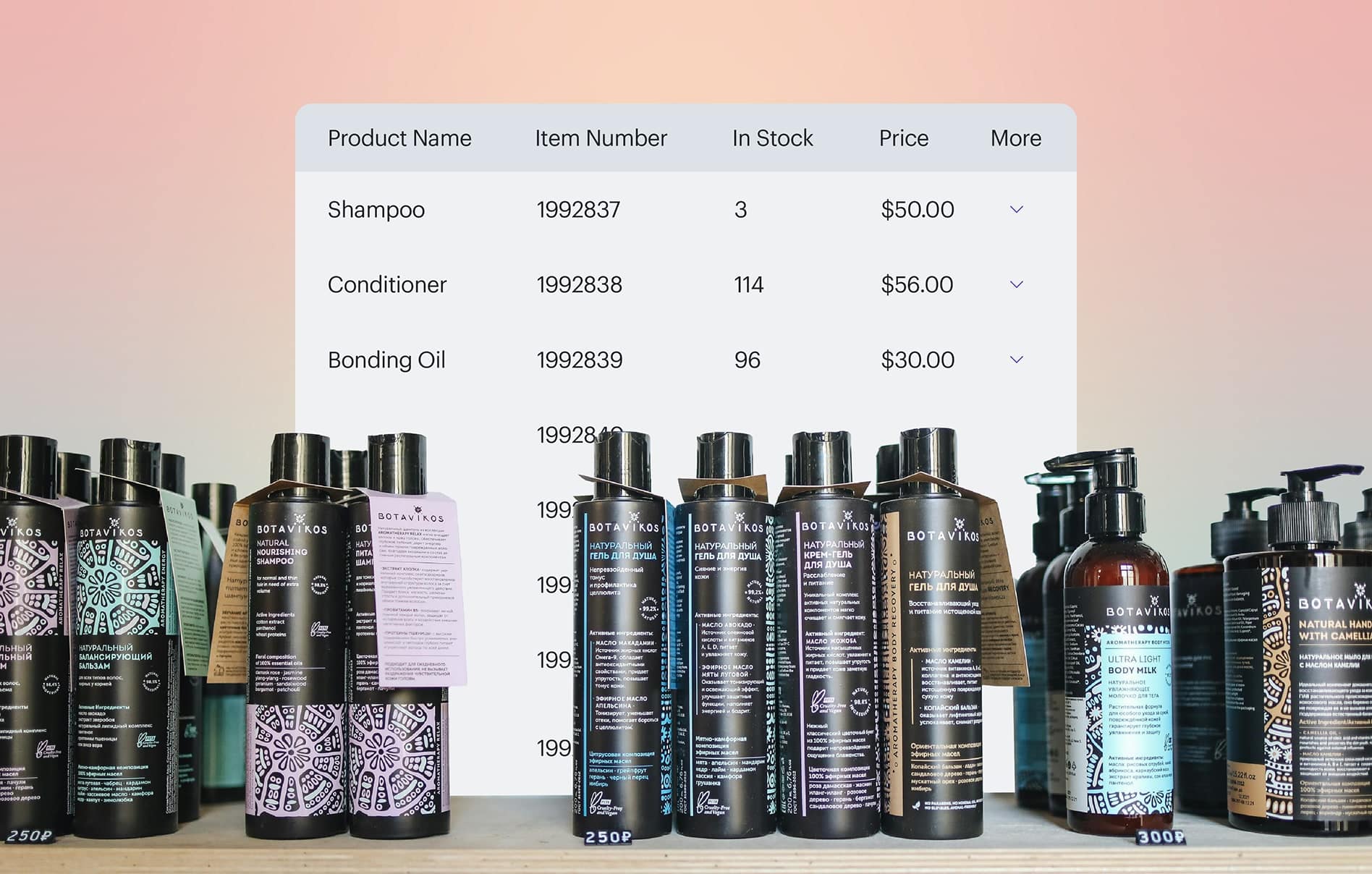Managing your hair salon’s inventory may not be a stylist’s favorite task, but — if handled the right way — organized inventory can make your salon more efficient and lucrative.
Managing salon inventory is an important part of running a successful hair business.
That’s because the salon industry thrives on more than just exceptional behind-the-chair skills and customer service.
A well-managed inventory — stocked with high-quality hair products — is key to a well-rounded salon.
Looking for specific info? Feel free to jump ahead. 👇
- Why Is Salon Inventory Management Important?
- 8 Tips for Managing Your Salon Inventory
- How Schedulicity Can Help With Your Salon’s Inventory
How to Manage Your Salon Inventory: A Comprehensive Guide
Before talking about effective strategies for hair salon inventory management, let’s talk about why: efficiency and cost-effectiveness.
Why Is Salon Inventory Management Important?
Salon inventory includes all the products used for services you offer in your salon (shampoos, conditioners, dyes) and products you sell to clients (hair styling products or styling tools).
Managing these products is crucial to avoid overstocking or shortages — which can directly affect your salon’s efficiency and revenue.

What Kind of Money-Maker Are You?
Let’s talk money, honey! Spend it, save it, hustle for it.
Take the Quiz8 Tips for Managing Your Salon Inventory
1. Perform Regular Audits & Stocktakes
Even with automated systems for your salon’s inventory — which Schedulicity can help out with 😉— regular physical audits are essential.
You need to schedule monthly or quarterly stocktakes to verify the accuracy of your salon software’s inventory report.

Stocktakes help identify discrepancies early, allowing for adjustments before they impact your hair business – like running out of hair dye in the middle of an appointment.
It’s also an excellent opportunity to assess the condition of your products, removing any products that might be damaged or expired.
You don’t want to sell clients leaky bottles or unsealed jars of hair products.
2. Understand Your Salon Inventory Costs
Inventory costs can affect your salon’s bottom line.
These costs include the cost of purchasing products, storage, insurance, and the potential loss via damage or expiration.
Schedulicity Tip: Optimize your inventory levels to match demand and reduce overhead salon costs.
3. Build Vendor Relationships
Hey, it doesn’t hurt to make friends with your vendors. 🙂
Cultivating strong relationships with your suppliers can be a game-changer in managing your salon’s inventory.
A better relationship can help you negotiate better pricing, return policies, and delivery schedules to suit your salon’s needs.
Suppliers can also offer valuable insights into trends — helping you anticipate changes in demand for certain products.
4. Prioritize High-Movement Products
Take the time to figure out which products have the highest turnover and contribute most to your revenue.
These “high-movement” items should always be adequately stocked to avoid missing out on revenue.
Schedulicity Tip: Slow-moving products can tie up funds and space. Consider phasing them out or using promotions to clear them out. (Here’s a calendar of the best promotional days for salon sales.)
5. Educate Your Team
Running a salon means you hired hairstylists, and they play a crucial role in inventory management.
Schedule a weekly team meeting to ensure they understand the importance of product sales and commission, inventory tracking, and reordering processes.
Your stylists should also be aware of how their product usage affects total inventory levels and, ultimately, the salon’s profitability.
6. Set Clear “Reorder” Points
Reorder points for salon inventory means the deadline where you need to reorder to have new stock arrive before running out.
These points vary based on the product’s usage rate and the delivery time to get them in your salon.
But it’s important to know where you stand at any given time. Keep a running calendar or list of deadlines and usual shipping times.
Schedulicity Tip: Keep your salon inventory extra organized with a chart that includes product names, estimated shipping times, cost, quantity, and vendor contact information.
7. Analyze & Adjust as Needed
At the end of the day, your salon’s inventory is never static.
Your inventory needs will constantly change with hair trends, seasons, and client preferences – and that’s normal.
For example, Cowboy Copper was big toward the end of 2023, but will cool-toned brunettes or warm brondes make a comeback this year?
That’s why it’s important to regularly review your inventory performance — identifying trends and adjusting your ordering strategy accordingly.
Regular analysis should influence your ordering decisions, helping you stay ahead of demand curves and optimize your inventory.
8. Implement a Salon Inventory Management System
Lastly, you’ll save yourself a ton of headaches and time by implementing a salon inventory management system.
While there are plenty of salon inventory management tools out there, not all are created equal.
It’s important to shop around and find the salon software that fits your business.
Here at Schedulicity, we keep things simple for salon owners.
Your salon stays efficient with inventory management in the same app as your appointment calendar, marketing tools, and payment processing.
How Schedulicity Can Help With Your Salon’s Inventory
As an online salon scheduling app, we know how important products are to your business.
That’s why we built in an easy-to-use product management tool.
With Schedulicity’s built-in product management tool, you can:
- Add and sell products
- Track inventory, including how much you’ve sold and how much is on the shelf
- Use Quick Checkout to upsell after an appointment
That way, you can manage product inventory and your appointments all in one place.







